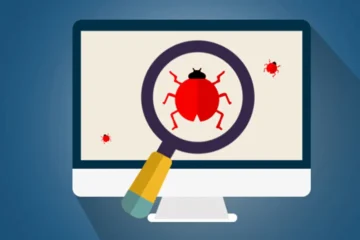Table of Contents
Software as a Service (SaaS): The Future of Software Delivery

In recent years, the software industry has witnessed a significant shift in how software is delivered and consumed. SaaS (Software as a Service) has emerged as a major changer, revolutionising how organisations and consumers access and use software applications. In this blog post, we will explore the informative and descriptive landscape of SaaS, understanding its concept, benefits, and its role in shaping the future of software delivery.
Understanding SaaS
Software as a Service (SaaS) is a software delivery model in which applications are centrally hosted and accessed by users over the internet. Instead of purchasing and installing software on individual computers, users can access the software through a web browser, eliminating the need for complex installation procedures and hardware requirements. SaaS providers handle maintenance, updates, and security, allowing users to focus on utilizing the software’s features and functionalities.
Key Characteristics of SaaS
SaaS is characterized by several distinctive features that set it apart from traditional software delivery models
Web-Based Accessibility: SaaS applications are accessible through web browsers, enabling users to access the software from any device with an internet connection. This accessibility promotes remote work, collaboration, and flexibility, eliminating the need for location-dependent software installations.
Scalability and Flexibility: SaaS solutions are built to scale in response to user demands. Businesses can easily adjust their subscription plans to accommodate growing or shrinking user bases, providing flexibility and cost optimization.
Automatic Updates and Maintenance: SaaS providers handle software updates, bug fixes, and infrastructure maintenance, ensuring users always have access to the latest features and a secure environment. This eliminates the burden of manual updates and ensures seamless software performance.
Subscription-Based Pricing: SaaS follows a subscription-based pricing model, where users pay a recurring fee to access and use the software. This model offers cost predictability, as users pay for what they use and can adjust their subscription plans based on their requirements.
Benefits of SaaS
SaaS offers a range of benefits to both businesses and individuals, making it an attractive choice for software delivery:
Cost Efficiency: SaaS eliminates the need for upfront hardware, infrastructure, and software licence expenses. Users can subscribe to SaaS applications at affordable monthly or annual rates, significantly reducing initial costs and making software accessible to small businesses and startups.
Easy Deployment and Accessibility: With SaaS, software deployment is hassle-free. Users can access the software instantly through a web browser, without the need for complex installations or compatibility issues. This accessibility facilitates rapid adoption and seamless collaboration across teams and locations.
Scalability and Flexibility: SaaS applications can scale easily to accommodate user growth or changing business needs. Businesses can add or remove user licenses as required, ensuring optimal resource allocation and cost management.
Continuous Updates and Support: SaaS providers take care of software updates, ensuring users have access to the latest features, bug fixes, and security enhancements. Additionally, SaaS providers typically offer customer support and assistance, helping users resolve issues and maximize the value of the software.
The Future of Software Delivery
SaaS is poised to shape the future of software delivery in several ways:
Industry Transformation: SaaS has already transformed several industries, enabling businesses to adopt advanced software solutions without heavy investments. As technology continues to evolve, SaaS will drive further innovation, providing access to cutting-edge applications and technologies to businesses of all sizes.
Collaborative Work Environments: SaaS applications are designed for collaboration and remote work, aligning with the changing dynamics of the modern workforce. As businesses embrace flexible work arrangements, SaaS will continue to play a vital role in fostering productivity and collaboration across geographically dispersed teams.
Integration and Customization: SaaS applications often offer integrations with other software solutions, enabling businesses to create tailored ecosystems that fit their specific needs. The future of SaaS will witness seamless integration capabilities, allowing businesses to leverage multiple applications to streamline workflows and optimize efficiency.
Artificial Intelligence and Machine Learning: SaaS providers are increasingly integrating artificial intelligence (AI) and machine learning (ML) capabilities into their offerings. These technologies will enhance the functionality and intelligence of SaaS applications, providing personalized experiences, predictive analytics, and automation.
Conclusion
Software as a Service (SaaS) has revolutionized the software delivery landscape, offering accessibility, cost efficiency, and flexibility to businesses and individuals alike. With its web-based accessibility, automatic updates, and scalable pricing models, SaaS is well-positioned to shape the future of software delivery. As technology continues to advance, embracing SaaS will empower businesses to stay agile, leverage advanced applications, and drive innovation in the digital era. The future of software delivery is undoubtedly SaaS, a transformative force propelling us towards a more connected and efficient world.



